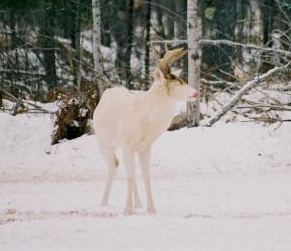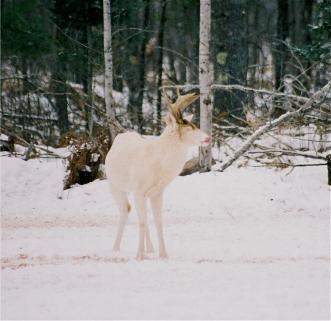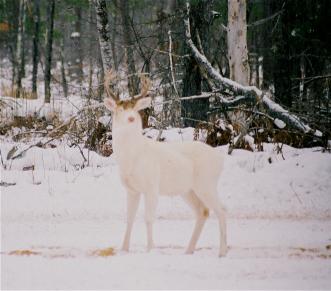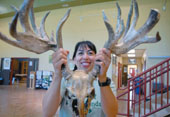Here are some photos of an albino white-tailed deer that I came across recently. The really odd thing is not only is being an albino mammal rare, but the fact that this is actually a mature buck is a miracle! Natural predators and hunters alike will hone in on oddly colored deer, even in areas where deer management and controlled harvests take place.
This whitetail buck can be identified as an albino deer — and not a piebald deer — by examining both his eyes and nose. Take a good look and you can see exactly what I am talking about.

The pink eye and the pink nose are textbook signs that this deer is an albino. At first glance, I noticed the brown on his head and near the base of the antlers and thought that maybe this buck was not an albino, but then I realized that the brown color comes from the buck rubbing his antlers on trees as a result of a rising testerone level, which triggers increased aggression as the breeding season begins .
Bucks will commonly rub their antlers once annual antler growth stops to rid themselves of decaying velvet. In addition, this activity helps strengthen their neck and shoulders prior to the breeding season.
Albino Buck Pics


Mature Albino Buck
Often times, I will see or be sent photos that feature albino deer, but it is a rare occasion to actually see a mature albino animal, especially a buck! The main reason albinos rarely get old (in the wild) is because a white coloration is not always favorable to animals living in North America, as very few places have snow on the ground throughout the year.
White colored deer really stick out during the spring and summer, although they blend in much better during the winter in the snow-covered areas of the country. However, much of the whitetail’s range is devoid of snow, even during the fall and winter.






